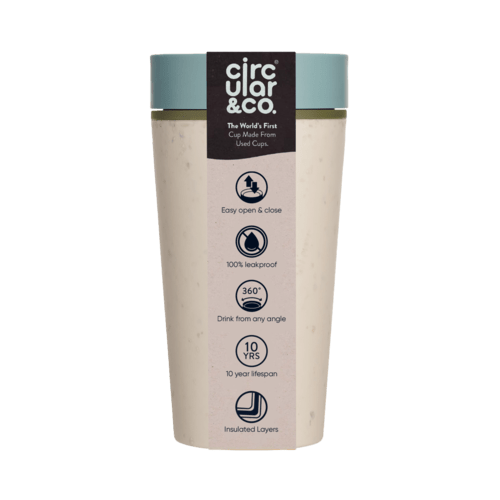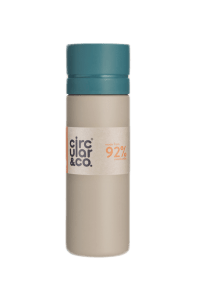Learn more about biobased materials.
‘Biobased,’ ‘biodegradable’ and ‘compostable’ all sound like the perfect solution to our ever extractive, resource depleting consumption. They evoke images of nature and natural systems and we are commonly seeing these terms emerge in the context of plastics within our daily lives. Consider new alternatives to conventional plastics; composed of non-biodegradable and fossil-based sources; emerging in consumer goods, textiles, and packaging.
So, if fossil-based sources are bad, then surely ‘bio’ sources must be environmentally friendly? Well, when in the presence of specific sustainability conditions, this is true to a certain extent.
What to look out for when buying ‘biobased‘:
- Is the exact share of biobased plastic content in the product specified?
- Is the biomass in the biobased plastic sustainably sourced, and does this sourcing cause no harm to the environment, comply with sustainability criteria, and do the producers prioritise organic waste and residues?
Why does the biomass in biobased plastics need to be sustainably sourced?
- We are aware of the depletion of our planets natural resources through the extraction of finite raw materials, such as the fossil fuels, which are used within the plastic industry. By partially replacing these finite materials with organic waste, bioproducts and residue for example we can reduce a dependency on fossil fuels. This being said, if biobased plastics do not utilise sustainably sourced biomass and instead are derived from primary biomass, (plants which are grown specifically for use as feedstock such as vegetable oils, sugar, or cereals) these plastics are in competition for land, and such monocultures are likely harmful for both ecosystem health and biodiversity.
What to look out for when buying ‘biodegradable‘:
- This product should not be littered. Does the product specify under which circumstances and environment it requires to biodegrade? For example soil or water, and how long does the product need to biodegrade?
- Products which are likely to be littered such as cotton bud sticks, cutlery, plates, straws, and stirrers, balloons, food containers, cups for beverages, beverage containers, cigarette butts, plastic bags, packets and wrappers, wet wipes and sanitary items cannot be claimed to be or labelled as biodegradable.
What to look out for when buying ‘compostable‘:
- When buying ‘compostable’ plastics or packaging, they should be correctly labelled as industrially compostable, comply with relevant standards, and display the way in which the item should be properly disposed of. Compostable does not necessarily mean you can put it on your garden compost heap, it requires the provision of specific environmental conditions in which to break down.
- You may ask, why can’t the items be composted at home? This is because it is much harder to reach full biodegradation of these compostable plastics without specific conditions present in an industrial setting. This means that these items are designed to decompose in industrial composting facilities rather than a natural compost heap.
Why is this good for consumers?
- Through the introduction of new standards for labelling, the conditions which must be met for classification will bring heightened clarity and consumer trust.
- Consumers can expect that when these conditions are in place, the plastics they are buying are indeed delivering environmental benefits.
- Appropriate and accurate labelling allows consumers to make informed decisions and accurately dispose of items.
- Consumers can be protected from misleading claims and harmful greenwashing.
Why is this important to designers?
The latest communication in relation to biobased, biodegradable, and compostable plastics help to inform eco-design requirements for sustainable products. For example:
- The share of biobased plastic.
- Sustainable sourcing for biobased plastics.
- Correct use of biodegradable and compostable plastics.
- Correct disposal of biodegradable and compostable plastics.
- Conditions and timeframe needed to biodegrade.
- Reuse of materials of all feedstocks, including biobased feedstocks.
- The use of secondary raw materials instead of primary raw materials (including biobased materials) wherever possible.
What does this mean for the industry?
- Prior to placing a biobased plastic on the market, the value chain should ensure the percentage of biomass content is specified clearly.
- Prior to placing a biobased plastic on the market, biomass sourcing must have been sustainably sourced.
- Producers of biomass should prioritise the use of organic waste and bioproducts and that the biomass materials are sustainability criteria compliant.
- Prior to placing a biodegradable or compostable plastic on the market it is important to assess the material properties required, the environment, timeframe needed for biodegradation, consumer behaviour and likelihood of adoption and correct usage.
- Only invest in bio and compostable plastics which have environmental plastics, i.e., where it is not feasible to fully remove, collect and recycle conventional forms of plastic.
e.g.
- the ag context, for usage of mulch films which are certified compliant against appropriate standards.
What next?
- The development of methodologies to assess the impacts of biobased plastics in comparison to the impacts associated with fossil-based plastics from a life cycle perspective.
Sources:
https://ec.europa.eu/commission/presscorner/detail/en/qanda_22_7158

